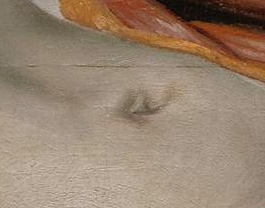|
Anatomy Lesson Of Dr. Nicolaes Tulp
''The Anatomy Lesson of Dr. Nicolaes Tulp'' is a 1632 oil painting on canvas by Rembrandt housed in the Mauritshuis museum in The Hague, the Netherlands. The painting is regarded as one of Rembrandt's early masterpieces. In the work, Nicolaes Tulp is pictured explaining the muscle, musculature of the arm to a group of Physician, doctors. Some of the spectators are various doctors who paid Commission (remuneration), commissions to be included in the painting. The painting is signed in the top-left hand corner ''Rembrandt. f[ecit] 1632''. This may be the first instance of Rembrandt signing a painting with his forename (in its original form) as opposed to the monogram ''RHL'' (Rembrandt Harmenszoon of Leiden), and is thus a sign of his growing artistic confidence. Background The event can be dated to 31 January 1632: the Amsterdam Guild of Surgeons, of which Tulp was official City Anatomist, permitted only one public dissection a year, and the body would have to be that of an exec ... [...More Info...] [...Related Items...] OR: [Wikipedia] [Google] [Baidu] |
Rembrandt
Rembrandt Harmenszoon van Rijn (, ; 15 July 1606 – 4 October 1669), usually simply known as Rembrandt, was a Dutch Golden Age painter, printmaker and draughtsman. An innovative and prolific master in three media, he is generally considered one of the greatest visual artists in the history of art and the most important in Dutch art history.Gombrich, p. 420. Unlike most Dutch masters of the 17th century, Rembrandt's works depict a wide range of style and subject matter, from portraits and self-portraits to landscapes, genre scenes, allegorical and historical scenes, biblical and mythological themes and animal studies. His contributions to art came in a period of great wealth and cultural achievement that historians call the Dutch Golden Age, when Dutch art (especially Dutch painting), whilst antithetical to the Baroque style that dominated Europe, was prolific and innovative. This era gave rise to important new genres. Like many artists of the Dutch Golden Age, such a ... [...More Info...] [...Related Items...] OR: [Wikipedia] [Google] [Baidu] |

